The Mayonian Prize for the Best Essay in Essays in History
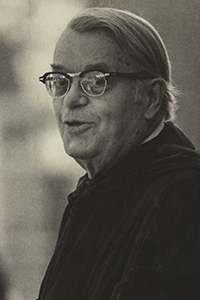 Bernard Mayo (1902 - 1979) was Professor of American History at the University of Virginia from 1940 to 1972. “A Maine native who had attended his state university,” as his student F. Pendleton Gaines, Jr., President of Wofford College, described him, he was “a maverick Down-Easter who had spent most of his adult life in and around Washington.”
Bernard Mayo (1902 - 1979) was Professor of American History at the University of Virginia from 1940 to 1972. “A Maine native who had attended his state university,” as his student F. Pendleton Gaines, Jr., President of Wofford College, described him, he was “a maverick Down-Easter who had spent most of his adult life in and around Washington.”
Bernard Mayo was born in the now nearly abandoned Maine mill town of Lewiston, and from 1920 - 1922 attended the University of Maine. He finished his undergraduate degree not at Maine, however, but at George Washington University (1924), where he also took his Master’s (1925). His Ph.D. came from nearby Johns Hopkins (1931). His early teaching jobs were around the Washington area too: first at National University (soon to merge with George Washington), then at American, then at Georgetown. His training was as an archive rat in the National Archives and the Library of Congress, and the result was a fearsome command of bibliography and historical detail. In graduate seminars this made him “utterly magnificent,” writes Pendleton Gaines; or, looked at in another light, utterly appalling: “Bernie loved to mention some obscure fact from an even more obscure historical journal and then chide his class for not knowing what he was talking about. I guess I have heard him say a thousand times, ‘Really, Mr. Smith (or Brown or Jones or Gaines), if we don’t know these elementary facts, how can we expect to understand the period?’ ” “I have never felt as stupid or ignorant, before or since, as I did in those seminars of Bernie’s.” Graduate training with Bernard Mayo was called “The Mayo Treatment.”
Mayo’s first book, Henry Clay: Spokesman of the New West (1927), was not only a landmark not only in the study of that great antebellum American statesman, and of the Whig Party (in which UVa has remained eminent) but also a monument in the professionalization and establishment of scholarly standards for the study of the history of United States. When Mayo moved to UVa in 1940, he began an intellectual journey back into the era of Jefferson. He was the author of Jefferson Himself: The Personal Narrative of a Many-Sided American (1942), a collection of the writings of Thomas Jefferson, and Myths and Men: Patrick Henry, George Washington, Thomas Jefferson (1959).
From 1966 until his retirement, Bernard Mayo lived in Pavilion IV on the University of Virginia Lawn with his wife Peggy (née McClure) and their poodle Susie, and kept over those seven years a continuous open house for undergraduates and friends (including Bernard Peyton Chamberlain, for whom History Department essay prizes are named). Upon his retirement, his students presented him with a Festschrift, edited by John Boles, and entitled America: The Middle Period. Essays in Honor of Bernard Mayo (University of Virginia Press, 1973). Mayo is buried in the University of Virginia Cemetery.
The Bernard Peyton Chamberlain Memorial Prizes for the Best Distinguished Major Thesis in World History, in Early American History, and in History
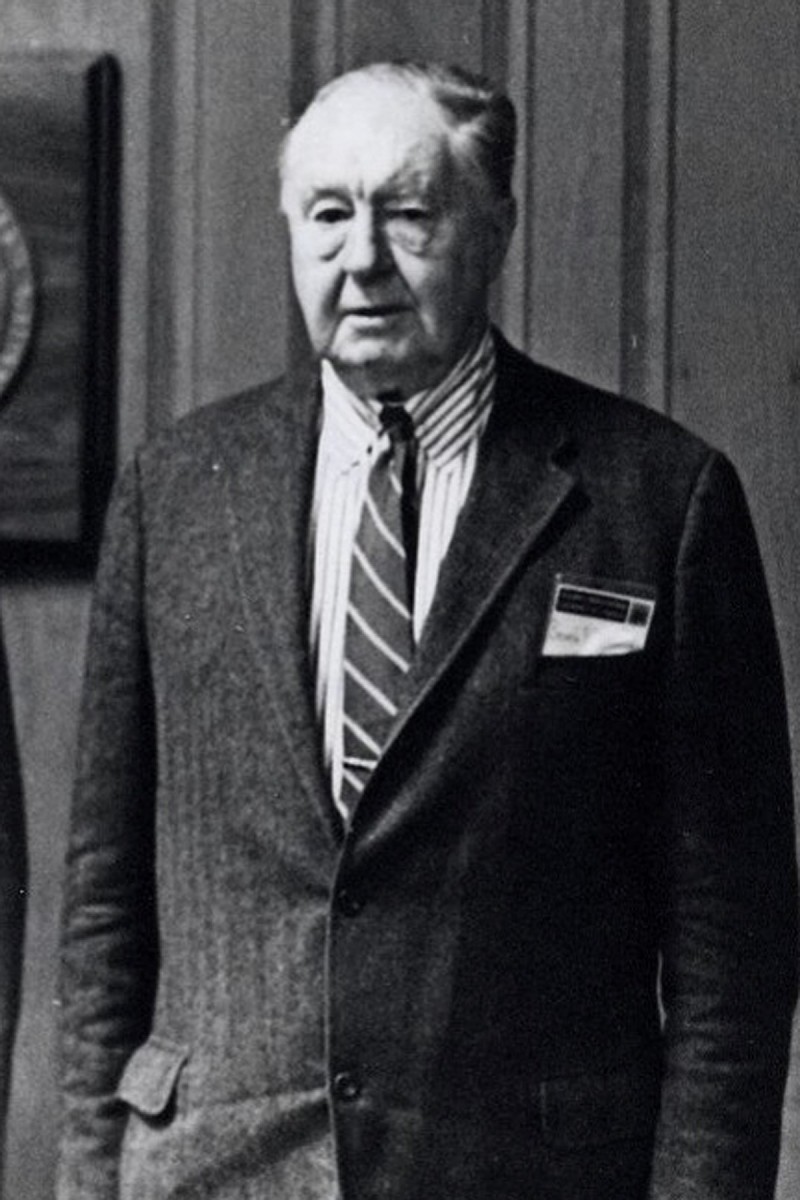 Bernard Peyton Chamberlain (1896 - 1983) was born at Birdwood in Albemarle County, but, in 1903, the family removed to Midmont, where Chamberlain was to live for most of his life. (The Boar's Head Inn Resort and UVa's Birdwood golf course now occupy Birdwood’s land, and UVa owns both the Birdwood and Midmont houses.)
Bernard Peyton Chamberlain (1896 - 1983) was born at Birdwood in Albemarle County, but, in 1903, the family removed to Midmont, where Chamberlain was to live for most of his life. (The Boar's Head Inn Resort and UVa's Birdwood golf course now occupy Birdwood’s land, and UVa owns both the Birdwood and Midmont houses.)
Chamberlain matriculated at the University of Virginia in 1915. When the United States entered WWI, he joined the University Hospital Unit, organized by UVa to send a fully equipped field hospital, staffed by UVa doctors and students, to France. Chamberlain—who had no medical training—nevertheless served as a guard and medical orderly.
Returning to the University of Virginia after Germany’s defeat, Chamberlain took up his studies again, graduating with a B.A. in 1919 and a law degree—the LL.B., usual in those days before the prevalence of the J.D.—in 1922. The extracurricular lives of undergraduates and law students were not then as separate as they later became; while pursuing both degrees, Chamberlain was active in Zeta Psi, Sigma Upsilon, Skull and Keys, the Glee Club, the Virginia Union, and the Jefferson Society, of which he was President. As a member of the Track Team, he achieved what was then the UVa record in the high-jump, at 6' 5 and 5/8" (Chamberlain's 1921 record was not broken until 1974; the current UVa record, set in 1988, is 7' 2 and 1/4"). Chamberlain’s achievement in the high-jump was of such an order that he was encouraged to harbor Olympic aspirations, and so made his way to Philadelphia in 1920 for the Olympic trials. It was, however, a disappointing summer: he injured himself and so never even competed at the trials.
Chamberlain began a legal career in Baltimore, but, by late 1923, his mother had died, his father was ailing, and, in order to take care of the latter, he returned to Albemarle and to Midmont. He practiced as an attorney in Charlottesville, with a series of chambers around Court Square, sometimes as a solo practitioner, sometimes with a partner.
After Pearl Harbor, he once again answered his country’s call, and although too old to fight, he served as Rationing Attorney in Richmond: if a citizen felt ill-used by the Ration Board, Chamberlain heard the appeal. After the war, Chamberlain returned to legal practice in Charlottesville, but when war broke out in Korea (1950 - 1953), he headed to Washington as a functionary in the Loan Department of the National Production Authority. About his stints in uniform and government during times of war he wrote that “I felt I was meeting, to some extent, my obligations as an American citizen” (emphasis added).
In his later years, local history became Chamberlain’s passion; he was for decades a member of, was President of, and from 1979 until his death Honorary President of, the Albemarle County Historical Society. For five years, he hosted the program, “Community History,” on local television. It was this ever-growing interest in history in later life that renders it natural that essay prizes in the History Department were endowed.
Bernard Peyton Chamberlain left a brief, privately published autobiography, bound with biographies of a number of his relatives: A Good Life: The Autobiography of an Albemarle County Resident who had chosen to record the chronicle of his long life for his progeny and their descendants. This is held in the UVa’s Special Collections, is much drawn upon in the above portrait, and is quite fascinating. He is buried in the University of Virginia cemetery.
The Norman Graebner Scholarship for the Support of Graduate Student Research in the United States and Abroad
 Norman A. Graebner (19 October, 1915 - 10 May, 2010) was the inaugural Edward R. Stettinius Professor of Modern American History at the University of Virginia, where he taught from 1967 - 1986. Author, co-author, and editor of more than thirty books, and (among other awards too numerous to list) recipient of six honorary degrees, Norman Graebner is perhaps the most prolific scholar ever to have adorned the Corcoran Department of History.
Norman A. Graebner (19 October, 1915 - 10 May, 2010) was the inaugural Edward R. Stettinius Professor of Modern American History at the University of Virginia, where he taught from 1967 - 1986. Author, co-author, and editor of more than thirty books, and (among other awards too numerous to list) recipient of six honorary degrees, Norman Graebner is perhaps the most prolific scholar ever to have adorned the Corcoran Department of History.
Born in Kingman, Kansas, Graebner received his B.A. in 1939 from the Milwaukee State Teacher’s College, and his M.A. from the University of Oklahoma in 1940. Answering his country’s call, he was commissioned in June 1945 and served in the U.S. Army during the occupation of Japan (1945 – 1946). He returned to the University of Chicago, where he received his Ph.D. in 1949. Before coming to Virginia in 1967, he taught at Iowa State University and the University of Illinois.
Graebner was a leading proponent of the “realist” school in the study of foreign policy. Other nations ruthlessly pursued their interests, while U.S. foreign policy was often confused, Graebner argued, by woolly thinking about morality and legality. In an obituary for the American Historical Association, his co-author Richard Dean Burns wrote, “[i]t is in his reading of the Cold War that Graebner is, in many ways, both impressive and devastating. For him, the Cold War was something akin to a farce of ideological perversity. American assertions that the conflict was being waged for liberty were nothing short of ridiculous. Containment was a policy that was bound to go pear-shaped, and pear-shaped it did go—in the bloody theatres of Indochina. Whither, then, the idea of American exceptionalism, which pales in the broader arena of state self-interests? Calculate and be cautious, or be damned.”
Prominent among Graebner’s many monographs were Empire on the Pacific: A Study in American Continental Expansion (1955); The New Isolationism (1956); Foundations of American Foreign Policy: A Realist Appraisal from Franklin to McKinley (1985); and America as a World Power: A Realist Appraisal from Wilson to Reagan (1984). He also left a thoughtful chronicle of his own career, A Twentieth-Century Odyssey: Memoir of a Life in Academe (2002).
A brilliant lecturer, Graebner often enrolled classes at Illinois and Virginia in excess of five hundred students. “I have never heard an instructor give such spellbinding addresses,” recalled Larry Sabato, Robert Kent Gooch Professor of Politics at UVa, who attended his lectures when an undergraduate. For his eminent scholarship and superb teaching, he was honored with the University of Virginia’s highest honor, the Thomas Jefferson Award; in the national sphere he was elected a Fellow of the American Academy of Arts and Sciences.
Norman Graebner was a gentleman and a creature of the world before the collisions of the 1960s. UVa President John Casteen said of him that “[h]e has lived the scholar’s life with qualities of intellectual rigor, human kindness, and collegiality that few can equal.”
The Thomas Hammond History Award for Outstanding Undergraduate Research in Russian and Soviet History
 Thomas Taylor Hammond (15 September, 1920 - 11 February, 1993) was Professor of History at the University of Virginia from 1949 to 1991. Born in Atlanta, he took his B.A. (1941) at Mississippi and an M.A. in economics at North Carolina (1943). He served in the U.S. Navy in the waning months of WWII, and was in the fleet preparing for the invasion of the Japanese mainland when Hiroshima and Nagasaki rendered that fearful undertaking superfluous.
Thomas Taylor Hammond (15 September, 1920 - 11 February, 1993) was Professor of History at the University of Virginia from 1949 to 1991. Born in Atlanta, he took his B.A. (1941) at Mississippi and an M.A. in economics at North Carolina (1943). He served in the U.S. Navy in the waning months of WWII, and was in the fleet preparing for the invasion of the Japanese mainland when Hiroshima and Nagasaki rendered that fearful undertaking superfluous.
Tom Hammond’s interests turned to history, and after the war he held brief teaching positions in the subject at Emory and Louisiana State University. He then proceeded to Columbia University’s Russian Institute, then the only serious program in Russian studies in the country, taking a second M.A. in 1948 and his Ph.D. in 1954. While still studying at Columbia, he was recruited by the eminent historian of Thomas Jefferson, Dumas Malone, for the University of Virginia, where he was appointed in 1949 as an assistant professor of history. Malone chose well. Hammond remained at UVa for forty-two years until his retirement in 1991, and brought great distinction to the University as a pioneer in the new and vital field of Sovietology: in the late 1940s and early 1950s, the United States knew nearly nothing about her new adversary, Communist Russia.
Hammond’s books included Yugoslavia Between East and West (1954); Lenin on Trade Unions and Revolution, 1893-1917 (1957), and Red Flag Over Afghanistan (1984), but his influence was at least as great as an indefatigable promoter of the study of Russian and Slavic history and language, at UVa and nationally. In the mid-1960s, he founded, and then directed, the UVa Center for Russian and Slavic Studies. Nor was this promotion confined to the academy. He traveled extensively behind the Iron Curtain—winning Fulbright, Guggenheim, Ford, and Rockefeller fellowships—and, a skilled and relentless photographer (and heroically indifferent to the dangers of photography in totalitarian states), wrote famous articles for National Geographic (in 1959 and 1966) which he illustrated with his own photographs.
Hammond’s students remember him as a stern Cold Warrior, aloof and imposing, a stickler for the honor code and the coat-and-tie rule that governed UVa student dress during much of his career, a teacher who carefully re-graded all the exams marked by his teaching assistants. His care for his students and others, however, was made manifest by his involvement in the 1950s and 1960s in the struggle for racial equality in Charlottesville, serving as president of the Charlottesville chapter of the Council for Human Relations, and on the executive committee of the Charlottesville branch of the NAACP.
The University of Virginia Library holds Hammond’s papers to a total of 64 boxes, containing thirty-two thousand items and including correspondence with George Kennan, James Reston, Justice William O. Douglas, and President Jimmy Carter.
The Thomas Hammond History Award was endowed in his memory by Professor Hammond’s second wife, Nancy, who, until her own death, took a keen interest in the winning essay.
The Stephen C. Innes Prize for the Best Undergraduate Essay on the Theme of “Community in History”
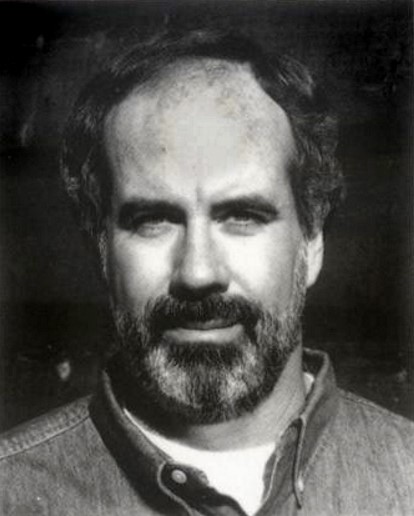 Stephen Chandler Innes (19 December, 1946 – 5 September, 2005) was James Madison Professor of History at the University of Virginia. He took his B.A. from Boston College in 1968—where he played Freshman basketball—and his Ph.D. from Northwestern University in 1977. His Ph.D. had been delayed by military service, spent partly in Heidelberg, that most historical of cities. He always retained fond memories of evenings at zum Seppl, one of the ancient student taverns. He was hired by the University of Virginia in 1977, and, until his untimely death, spent his entire career at UVa.
Stephen Chandler Innes (19 December, 1946 – 5 September, 2005) was James Madison Professor of History at the University of Virginia. He took his B.A. from Boston College in 1968—where he played Freshman basketball—and his Ph.D. from Northwestern University in 1977. His Ph.D. had been delayed by military service, spent partly in Heidelberg, that most historical of cities. He always retained fond memories of evenings at zum Seppl, one of the ancient student taverns. He was hired by the University of Virginia in 1977, and, until his untimely death, spent his entire career at UVa.
Steve Innes was a scholar of colonial America, and especially of social relations in seventeenth-century Massachusetts, his home state. His family hailed from Marshfield on the South Shore, making him a fellow townsman of Daniel Webster; and Innes was always a fanatical Red Sox fan. His first major work, however, appeared in 1980 and was written in cooperation with his dissertation advisor, Tim Breen. Entitled Myne Owne Ground, it represented an important study of free blacks on Virginia’s Eastern Shore. A monograph on his beloved Massachusetts soon followed, Labor in a New Land (1983), a social history of early Springfield. This book revolutionized historians’ understanding of the economic life of Puritan New England, previously regarded as calm and godly by scholars who had read chiefly in the writings of Puritan divines and poured over ecclesiastical records. In his analysis, Innes put to use for the first time the account books of the ruthless John Pynchon (1652 - 1702), and showed that economic relations resembled less the peaceable kingdom of God the Father and more those depicted in The God Father. After Labor in a New Land came a stream of articles, culminating in Creating the Commonwealth: The Economic Culture of Puritan New England (1995), which was honored with the American Historical Association's Albert J. Beveridge Award in American History. This second monograph sought to answer the question posed by the first: how could such fierce piety and such merciless economic exploitation co-exist? It was a matter, Innes showed, of rightly understanding Puritan piety.
Innes was a justly popular and revered teacher. His most beloved courses were “The Meaning of Community in America” and “The American Revolution,” both of which he taught every year. Under constant pressure from successive Chairs of the Department to open those courses to more students, he did so, but he refused to employ teaching assistants and taught all the discussion sections himself. In HIUS 701, the required team-taught first-year seminar that in his day tested the mettle of all first-year U.S. History graduate students, he was a superb intellectual duelist; and he was a formidable player as well in the regular Saturday-morning basketball game that gathered together several of his historian colleagues.
Steve Innes died at the age of fifty-eight after a long battle with leukemia. The Corcoran Department of History honors his memory and devotion to undergraduate teaching with the Stephen C. Innes Prize.
J. Carl Sewell III Graduate Fellowship in Civil War History
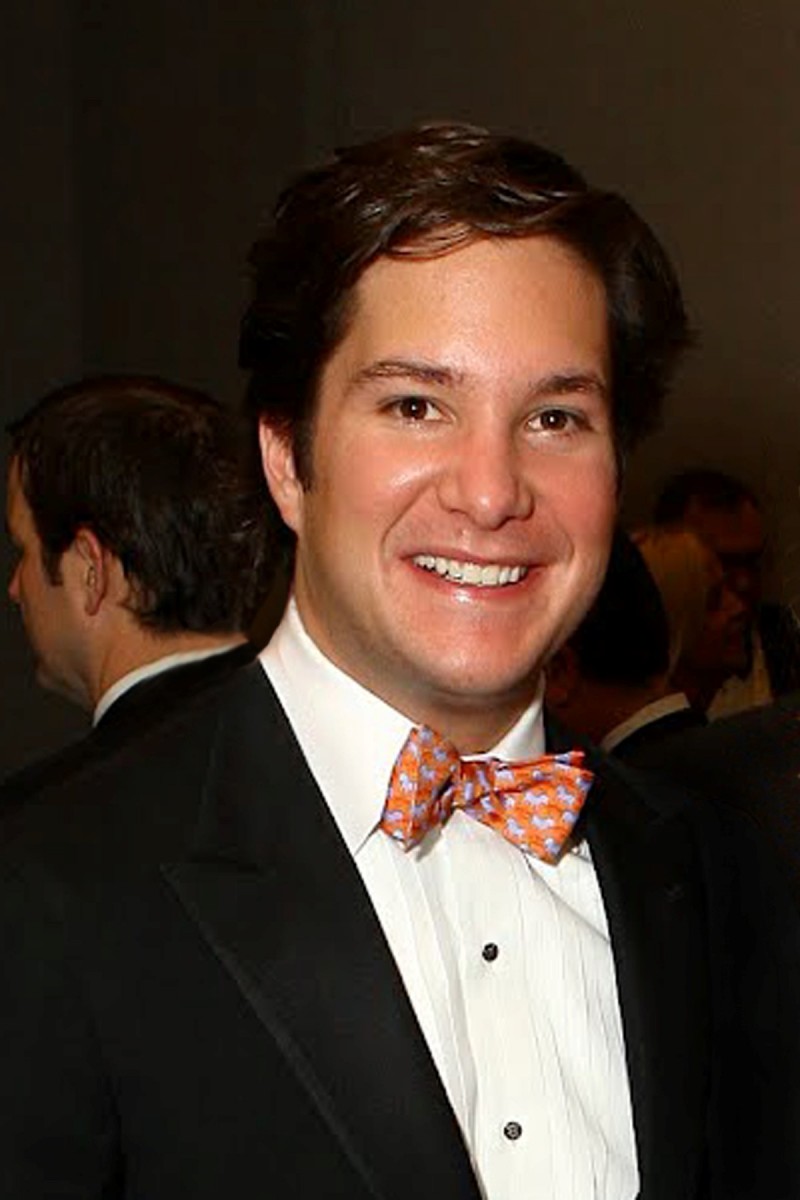 A native of Dallas, Texas, J. Carl Sewell III received his B.A. in History from UVa in 2006, and was a member of the Zeta Psi fraternity. He received an M.S. in Management from the Cox School of Business at Southern Methodist University. He is an executive of his family firm, Sewell Automotive Companies, founded in 1911 by his great-grandfather and grandfather, who assembled and sold Model T Fords out of the back of their combined hardware store, stable, and movie theater.
A native of Dallas, Texas, J. Carl Sewell III received his B.A. in History from UVa in 2006, and was a member of the Zeta Psi fraternity. He received an M.S. in Management from the Cox School of Business at Southern Methodist University. He is an executive of his family firm, Sewell Automotive Companies, founded in 1911 by his great-grandfather and grandfather, who assembled and sold Model T Fords out of the back of their combined hardware store, stable, and movie theater.
His grandfather began to focus on the luxury-car market after World War II, and became famous as a sophisticated “gentleman dealer”; his father expanded the luxury car business and wrote the best-selling book, Customers for Life (1989; rev. ed. 2002, and translated into nineteen languages). The family business creed is combining high-quality products with dedicated service, and as private citizens, the family has a tradition of philanthropy that J. Carl Sewell III is continuing, sitting on the board of St. Mark's School in Dallas (from which he graduated in 2002) and generously sponsoring these awards in the History Department of the University of Virginia.
The Finger Family Undergraduate Research Fund (Established by Jonathan S. Finger)
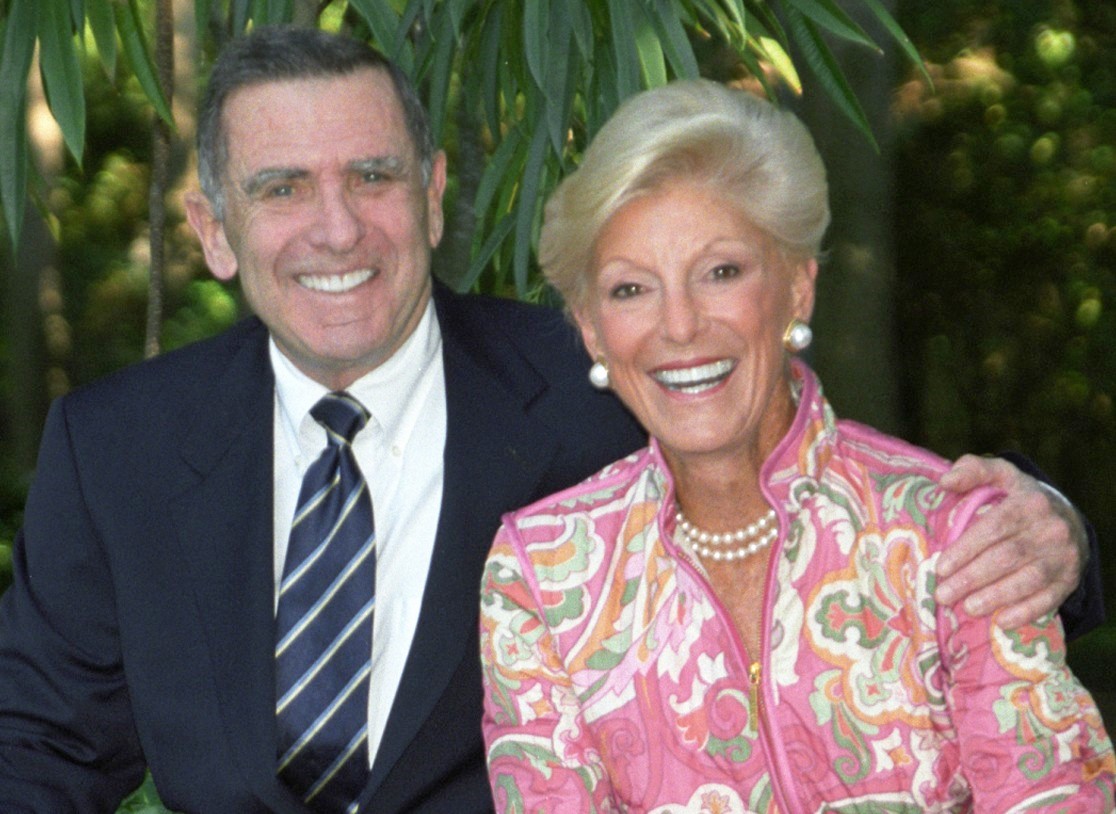
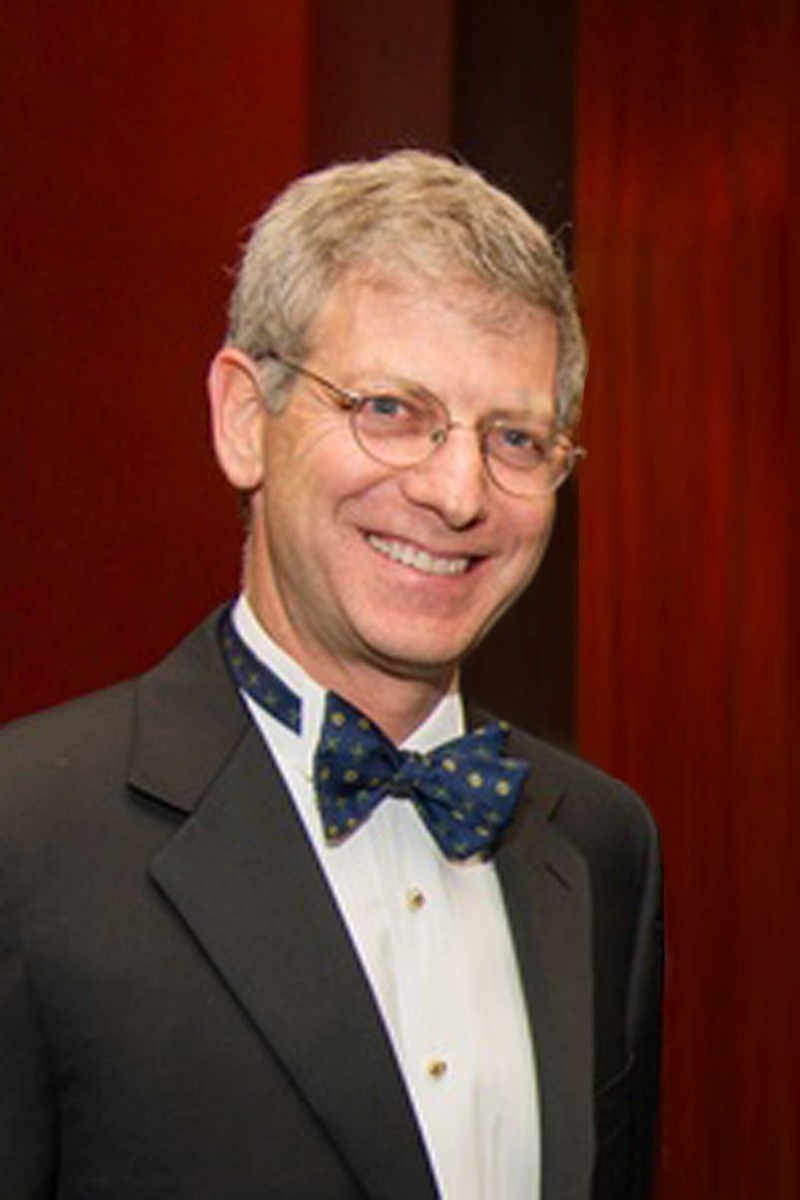
Jerry and Nanette Finger; Jonathan S. Finger
Jerry Eliot Finger (1932 - 2016) was born in Houston, Texas and, during his middle- school years, was sent to the Allen Academy in Bryan, Texas, a military school, from which he was later proud that he only ran away once. He attended Tulane but graduated from Wharton in 1954, taking a degree in economics and also training as a naval officer. He served in the Navy from 1954 to 1956, married Nanette Breitenbach (the marriage would last sixty-two years until his death), and returned to Houston to join his family firm, Finger Furniture, as an accountant, under the supervision of his father, Hyman Finger. Father and son left the firm in 1960, the latter for some successful years as an entrepreneur before he founded the Republic National Bank in 1963. He worked indefatigably, opened new branches to take advantage of Houston's growth, and became involved in real estate as a developer, financier, and owner. During the financial downturn of the 1980s his bank—now called Charter Bank--was the largest locally owned bank in the city not to fail or be taken over. Charter Bank continued to grow under his wise management, and held nearly a billion dollars in assets when, in 1996, he sold it to NationsBank. He and his wife then devoted their time to philanthropy, serving on the boards of over thirty charitable institutions, including the Foundation for the National Archives and the Aspen Institute. He also taught courses on entrepreneurship and real estate development at the Rice Business School until 2015. For fun, he collected model boats and ships, and miniature soldiers and sailors, and his wife Nanette pursued a parallel interest, creating miniature dioramas.
The Finger Family Undergraduate Research Fund was established in honor of Jerry and Nanette Finger by their son, Jonathan S. Finger, Managing Partner at Finger Interests, Ltd. and one of three sons of Jerry Finger and Nanette Finger. Jonathan took his B.A. from the University of Virginia in 1982 and his M.B.A. from the Wharton School in 1988. He learned the financial trade as an analyst first at Lehman Brothers and then at Drexel Burnham Lambert. In 1990, he joined his father’s Charter Bank as a Senior Vice President; between then and 1997, he increased the assets under the management of his division ten-fold from thirty to three hundred million dollars. In 1997, he founded Poseidon Capital Management, an investment advisory company, and came also to manage the family firm, Finger Interests Ltd., a diversified holding company comprising more than twenty business entities. In 2009, Finger Interests held 1.1 million shares of stock in Bank of America (into which NationsBank, to which he father had sold Charter Bank, had merged) and launched a heroic proxy-fight and lawsuit against the Bank of America to make the bank more accountable to its shareholders. Like his parents, Jonathan S. Finger is a munificent philanthropist—as the Texas Children’s Hospital and Congregation Beth Israel, Houston can report—and an educator, serving first as his own father’s teaching assistant at the Rice Business School, then taking over one of his father’s courses, and finally developing a new course on investment banking and capital markets. Jonathan Finger has been, and continues to be, immensely generous to the University of Virginia.
The Thomas Garnett Prize
Thomas “Tom” Garnett, Jr., graduated from UVa in 1962 with a B.A. in History and in his fourth year was a resident of the Lawn. He worked for the U.S. Department of Defense and lives in Alexandria, Virginia. The Prize in his name was endowed by his colleagues upon his retirement, knowing as they did of his great love of history, his esteem for the University of Virginia, and his fond memories of the Corcoran Department.
